Labradoodle vs Goldendoodle Shedding – Which Sheds the Least?
Doodles are often branded as “hypoallergenic” dogs that “don’t shed at all.” However, there is no 100 percent hypoallergenic dog that exists, and there is no breed that experiences zero shedding. So what’s the truth with Labradoodles and Goldendoodles? Do they shed? And if they do, which one sheds the least?
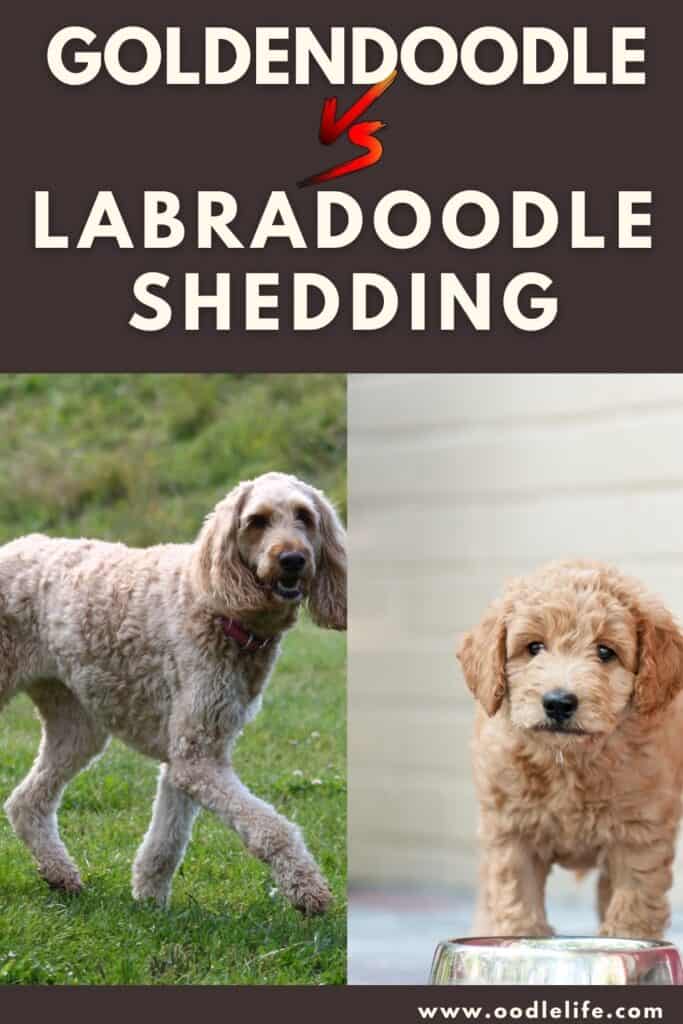
Find out what you can expect in terms of shedding and allergies, how frequently each breed sheds, and ultimately, which breed sheds the least.
Labradoodles
Labradoodles are charismatic, playful dogs with an easy-going attitude that make great companions for families of all sizes and makeups.
They, like their Goldendoodle counterparts, are also shrouded in myth. Typically advertised as a “hypoallergenic” pet, they are frequently thought of as one of the go-to solutions for people with allergies and asthma due to how little they shed.
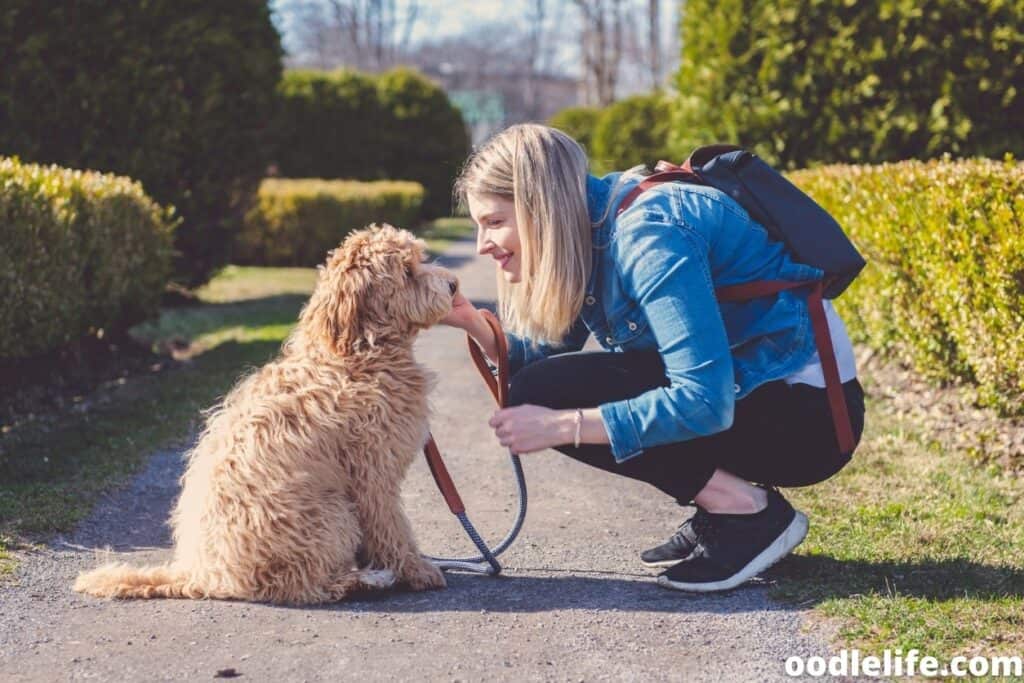
Coat Types
When talking about Labradoodles and shedding, we’d be remiss if we didn’t talk about the different generation names and their coat types. Each generation has a unique coat type that can make a difference in how much or little they shed.
F1 Labradoodle
The F1 Labradoodle puppy is a 50/50 mix between a purebred Labrador Retriever and a purebred Poodle. They are the first generation of puppies from their parents. Their coats grow between 3-4 inches long and can range from smooth to curly.
Due to their higher percentage of Labrador genetics, it is difficult to know beforehand if an F1 Labradoodle will shed or not. That being said, it is safe to assume that this generation will shed more than other generations.
F1B Labradoodle
This generation of Labradoodle is 75 percent Poodle and 25 percent Labrador Retriever. This mix typically results in a long, curly, or wavy coat that sheds very little and is considered to be mostly hypoallergenic.
However, because the F1B Labradoodle doesn’t shed much, regular grooming and haircuts will be necessary to maintain a healthy, tangle-and-matt-free coat.
F1BB Labradoodle
The coat type of an F1BB Labradoodle is almost always curly due to the fact they are 87.5 percent Poodle. Curly coats shed much less than a flat or straight coat. The higher Poodle genetics makes this generation of Labradoodle to be the most likely not to shed out of all of the first generation makeups. They are also considered to be the most hypoallergenic.
F2 Labradoodle
An F2 Labradoodle is a second-generation Labradoodle. They are a mix of two F1 Labradoodles, which breaks down into about 87 percent poodle and 13 percent Labrador Retriever.
Their coat characteristics vary widely. Some may have the traditional wavy or curly coat, while others can have completely straight fur. The range of coat types this type of Labradoodle can have makes it impossible to predict whether or not they will shed and how much they will shed.
Shedding Frequency
Compared to other purebred and mixed breed dogs, Labradoodles don’t shed much.
This is largely due to their poodle parentage.
Labradoodles are also not seasonal shedders, which occur most often in the spring and fall when the temperature changes. Most breeds of dogs are double-coated, meaning they have both an undercoat and a topcoat. As the weather warms, dogs shed their thicker winter undercoats to make way for their summer coats. As temperatures cool, dogs shed the lighter undercoat to grow a warmer coat for winter.
Labradoodles don’t have an undercoat. This means they naturally shed less than other breeds.
Goldendoodles
Like their Labradoodle counterparts, the Goldendoodle’s shedding frequency and hypoallergenic status have everything to do with the parent they inherited their coat from.
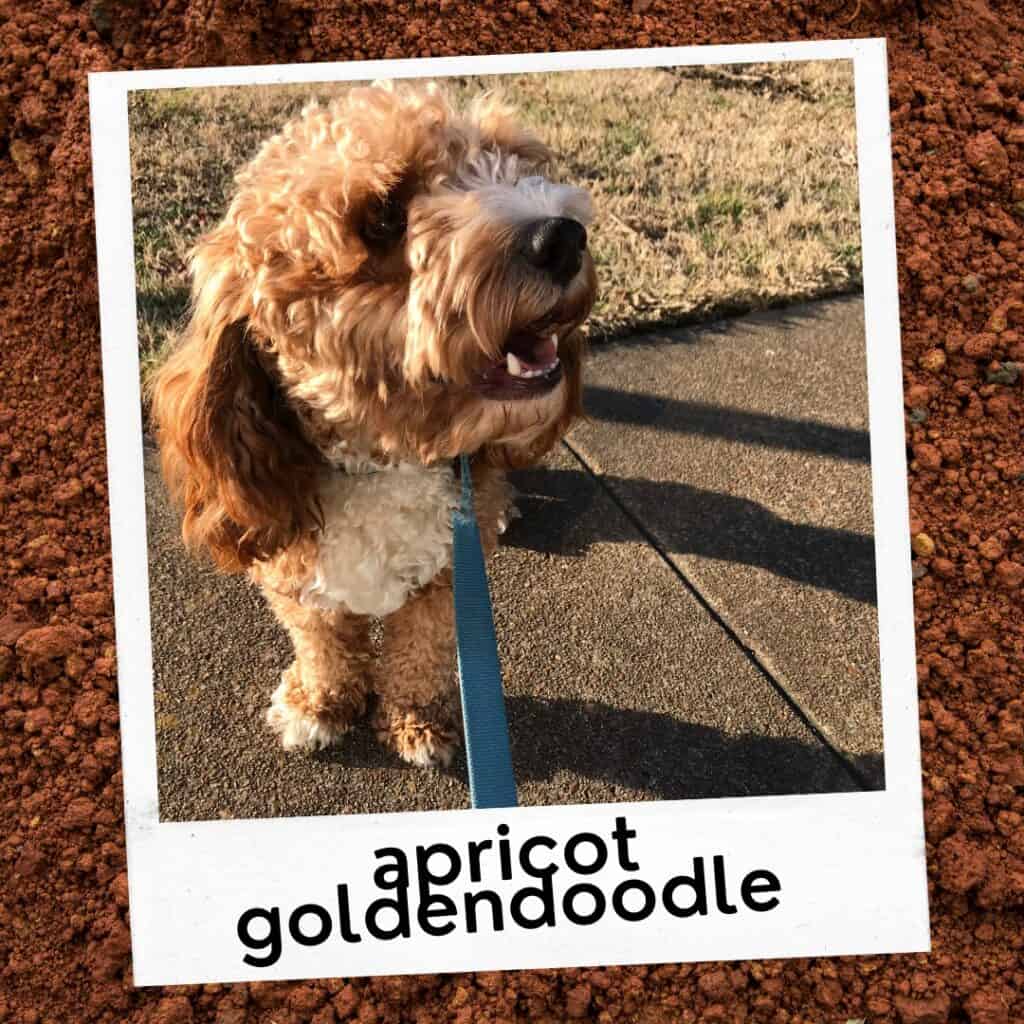
Coat Type
Most Goldendoodles inherit a wavy coat from their Golden Retriever parent or a curly coat from their Poodle parent. A Goldendoodle can have a straight coat, however, that is much more likely to occur in Labradoodles.
Goldendoodles who do end up with a straight coat–also known as an improper coat–don’t have the typical furnishings of a curly-haired doodle. These are the long eyebrows and mustaches which give them the scruffy look. Straight-coated Goldendoodles tend to shed more than Goldendoodles who carry the gene for furnishings that can and would need to have their hair cut short to avoid shedding.
Both Golden Retrievers and Poodles also carry the gene for long hair, which means Goldendoodles will typically have a longer coat to maintain.
F1 Goldendoodle
The first generation Goldendoodle is the result of a purebred Golden Retriever and a Poodle. They are generally light shedders, with coats that grow 3-5 inches long. Regular brushing and haircuts are necessary to keep their coats tangle-free.
F1B Goldendoodle
This generation of Goldendoodles can have higher Golden Retriever or Poodle genetics depending on the breeder. About 50 percent of F1B Goldendoodle puppies inherit the poodle coat genetics and are considered non-shedding. They also have a 50 percent chance of being hypoallergenic.
The coat type of this generation also depends on the dominant parent’s genes. Many are 3-5 inches long but can vary between straight, wavy, and curly.
F2 Goldendoodle
The second generation Goldendoodle is the result of breeding two first-generation Goldendoodles. Like the F2 Labradoodle, this generation of Goldendoodle has a much higher chance of producing puppies with coats that shed. A litter of F2 Goldendoodles would likely see a mix of non-shedding, low to heavy shedding, and full-shed pups.
Their coats can also vary between straight, wavy, and curly, although the improper coat type is often seen in this generation. However, the increased shedding does result in less grooming and coat maintenance.
Shedding Frequency
In general, Goldendoodles are considered to shed less than other breeds of dogs. The low volume that they do shed is often not enough to bother people with allergies or health conditions like asthma.
All generations of Goldendoodles are considered to be year-round shedders. Warming and cooling temperatures can slightly increase the amount of shedding a Goldendoodle experiences, but they are not seasonal shedders.
The amount they shed can also be a result of a variety of internal and external factors, including their personal environment, how frequently they are groomed, and any underlying health conditions, including stress.
Labradoodle and Goldendoodle Shedding Management
Whether you own a Labradoodle or a Goldendoodle, there are some basic steps you can take to help manage the minimal shedding you will experience.
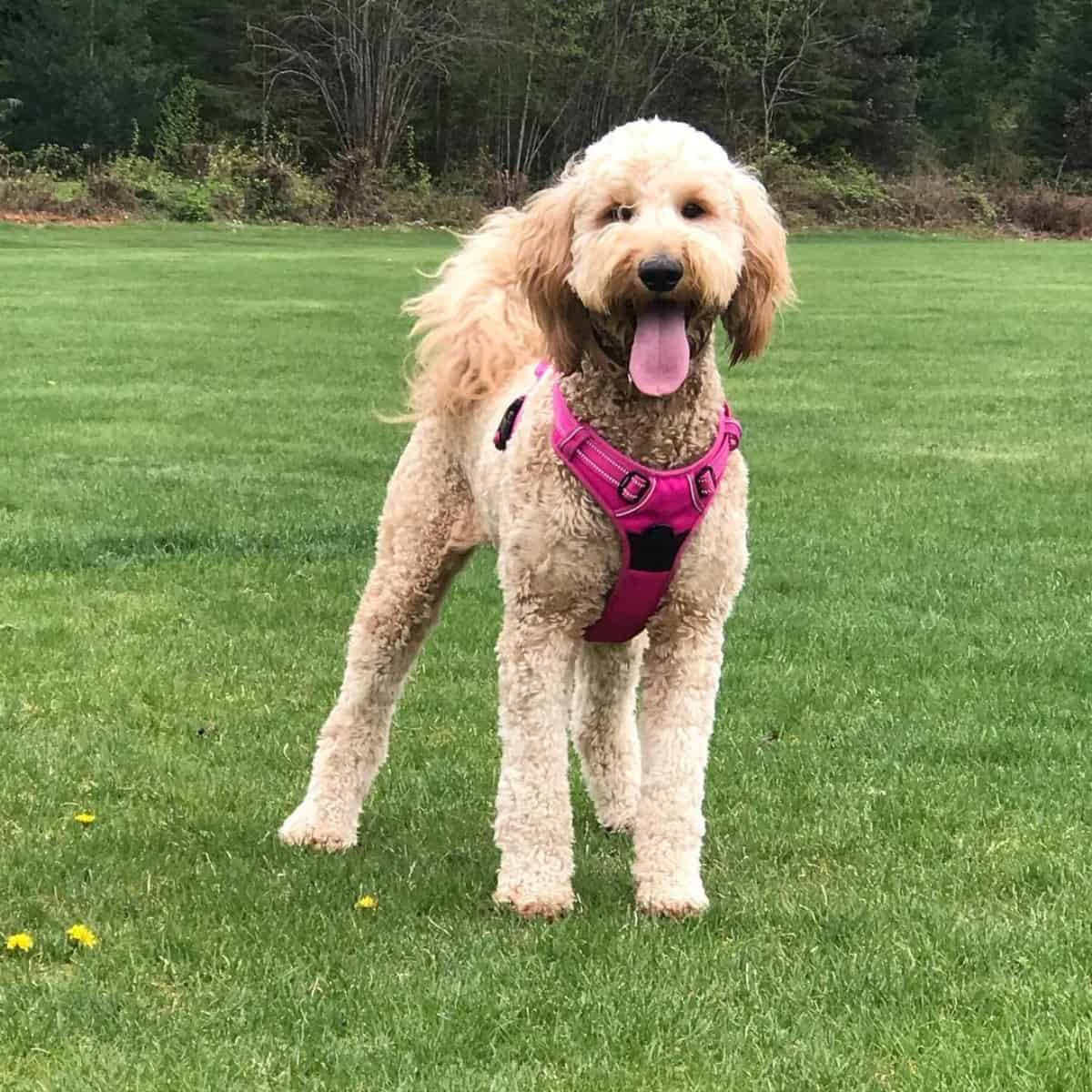
Regular grooming can help reduce shedding and its impact on your health. Brushing your dog’s fur a minimum of once a week can help reduce the amount of loose hair in your dog’s coat and decrease the amount of loose hair that ends up floating around your house and sticking to your furniture.
If you opt for grooming your Doodle at home, you’ll need the proper tools. Look for wide-tooth combs and brushes which have fine wire bristles that can remove all of the dirt, loose and matted hair, as well as detangle your pup’s coat. A tool like the Furminator would also work.
Getting your Labradoodle or Goldendoodle’s fur-trimmed or cut is also an option to manage shedding. Short fur is easy to maintain and is less likely to shed. If you want to do it yourself, invest in a set of clippers with operating speeds of 3400-4400 strokes per minute. A heavier-duty clipper is required to deal with the thick and curly coat types.
So, which breed sheds the least?
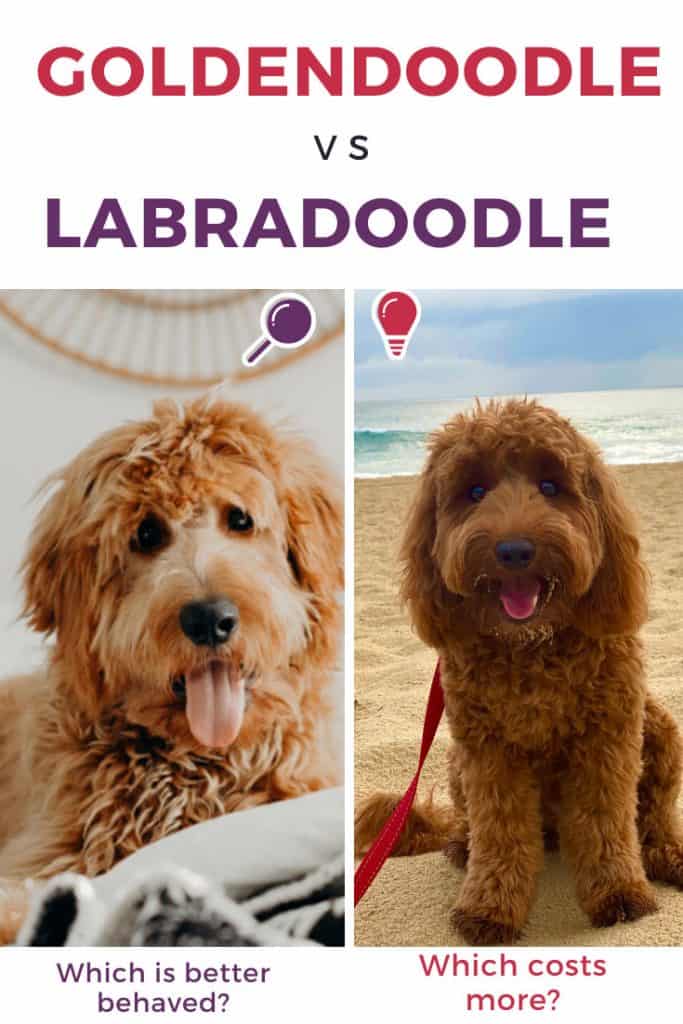
When it comes down to it, neither Labradoodles nor Goldendoodles are zero-shedders. They are both considered to be light-shedders, depending on their generation and genetic makeup.
There are a variety of coat types that are a result of the percentage of Labrador Retriever, Golden Retriever, and Poodle your dog ends up with. Doodles with higher percentages of Labrador and Golden Retrievers are going to experience more shedding than a Doodle with a stronger Poodle parentage.
Due to their unique coat types, they require regular grooming and an intentional diet to create healthy coats for the duration of their lives. Brushing their coats can help eliminate loose hair and tangles, and keeping their hair clipped short can limit shedding even further.
It can be a challenge for those with allergies or even just an aversion to loose dog fur to know how much their new doodle puppy is going to shed. However, you should feel confident that both Labradoodles and Goldendoodles are generally low-shed, mostly hypoallergenic breeds that will fill your home with an abundance of love for years to come.